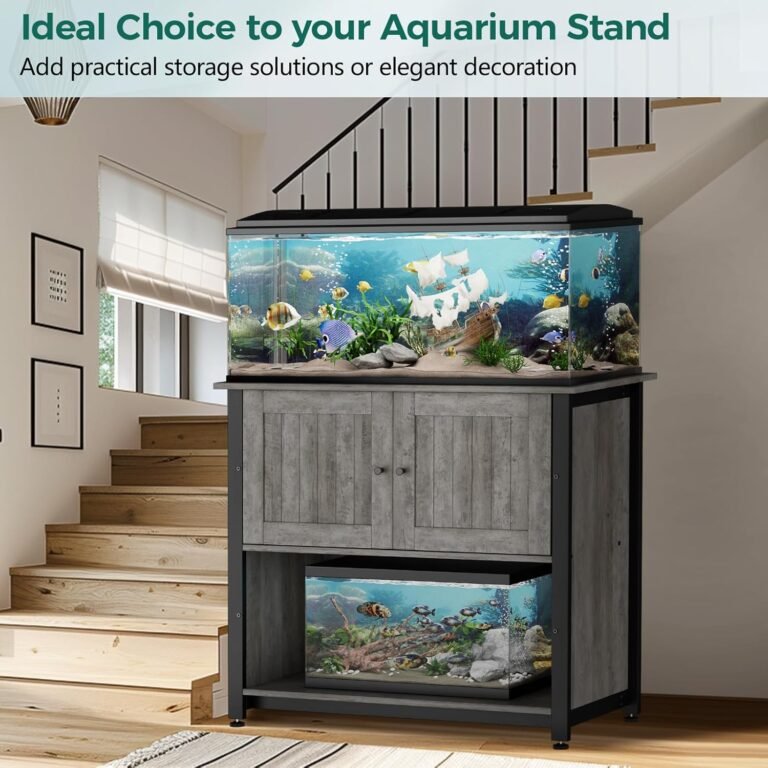Welcome to “Essential Guide to Aquascaping for Beginners,” where you’ll dive into the magical world of creating underwater landscapes! Imagine building your own little forest or mountain scene, but all under water in your fish tank. This guide will help you start your aquascaping adventure, show you the current trends, and explain all the tricky words so they’re easy to understand. Whether it’s choosing the right plants or figuring out where to place your rocks and sand, you’ll learn all the essentials to make your aquarium look amazing! So grab your tools, and let’s create a beautiful water world together!
Essential Guide to Aquascaping for Beginners
Have you ever dreamed of creating your very own underwater wonderland?
Aquascaping is like painting, but instead of using brushes and paints, you use plants, rocks, and fish to create beautiful underwater scenes in an aquarium. Think about how cool it would be to make your own little ocean or river right in your room! Let’s dive into this magical world together and learn how you can start your own aquascape, even if you’ve never done it before.
What Exactly is Aquascaping?
Aquascaping is the art and craft of arranging aquatic plants, rocks, stones, cave-work, and wood, in an aesthetically pleasing manner within an aquarium—in effect, gardening under water.

Why Try Aquascaping?
Imagine having a slice of the Amazon River or the Great Barrier Reef in your living room. Not only does it look stunning, but it’s also really fun to set up and take care of. Plus, watching your underwater world grow can be really relaxing.
A Peek Into the History
Long ago, people just used to keep fishes in plain tanks with sand. But then, they started experimenting with adding plants and other natural elements. In the 1930s, people in the UK began taking aquascaping seriously, creating beautiful underwater gardens. Today, there are competitions around the world where people show off their amazing aquascapes!

What’s Trending in Aquascaping?
Lately, many people love creating mini versions of mountains, forests, and even waterfalls under water. They use tiny plants and super-detailed decorations to create these scenes. It’s like having a movie set in your fish tank!
Understanding the Basics
Substrate: This is the soil or sand you use at the bottom of the tank. It’s where your plants will root. Filter: This keeps the water clean so your plants and fish stay healthy. Lights: Plants need light to grow, even underwater! Aquascaping tools: These are special tools like scissors and tweezers that help you arrange everything in the tank.

How to Set Up Your First Aquascape: A Step by Step Guide
Choosing Your Tank
When you start, it’s a good idea to pick a medium-sized tank. Too small and it’s tough to manage; too large and it might be too much work for a beginner.
Setting Up the Substrate
Your plants need something to grow in. Special aquatic plant soil is best because it has nutrients that help plants grow.
Adding Water and Equipment
Fill the tank with water, set up your filter, and make sure the lights are arranged to give your plants enough light.
Planting
Now, the fun part—planting your plants! Think about how big they’ll grow and make sure there’s space for them all.
Decorating with Rocks and Wood
You can use rocks and wood to make your aquascape look really natural. They also provide hiding spots for any fish you add later.
Filling the Tank
Slowly fill up the tank to avoid disturbing your plants and decorations. Use a plate or bowl to lessen the force of the water.
Example 1: The Classic Nature Aquarium
This style focuses on lush plant growth and tries to mimic natural landscapes. Picture a small, peaceful forest or a gentle hillside.

Example 2: The Iwagumi Layout
This Japanese style uses only rocks as the main focus, with very few plants. It’s simple but very elegant.
Viewing Both Sides
Some people love adding lots of plants and colors, while others prefer just a few elements. There’s no right or wrong—just what you like best!

What’s the Impact?
A good aquascape not only looks beautiful but also helps keep fish healthy. Plants produce oxygen and absorb waste products from the fish, creating a perfect little ecosystem.
Where Can Aquascaping Take You?
In the future, maybe we’ll have even more innovative tools and materials to make aquascaping easier and even more creative. Who knows what stunning underwater scenes you could create?
Broader Implications
Through aquascaping, not only do you learn about art and biology, but you also become more connected with nature. And by sharing your aquascape with others, you might inspire them to appreciate and protect natural environments.
Wrapping It Up
Remember, any great aquascaper started just like you, with a curious mind and a tank full of possibilities. Every bit of planting, every stone you place, is a step toward creating something totally unique and beautiful.
One Last Splash
So, what do you think? Are you ready to dip your toes into the water and start your own aquascape project? Maybe one day, your underwater world will win a prize, or simply make your home a little more magical.
Aquascaping is not just about decorating an aquarium; it’s about creating a living artwork where every element matters and works together. Dive in, enjoy the process, and watch as your aquarium comes to life!
Engage with Us!
If you loved learning about aquascaping, why not share your thoughts or your very own aquascape photos in the comments? We’d love to see what magical worlds you’re creating!



